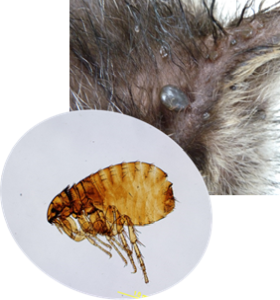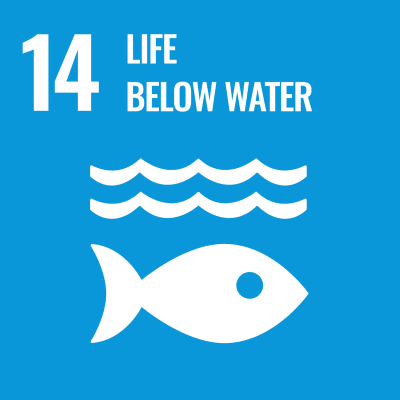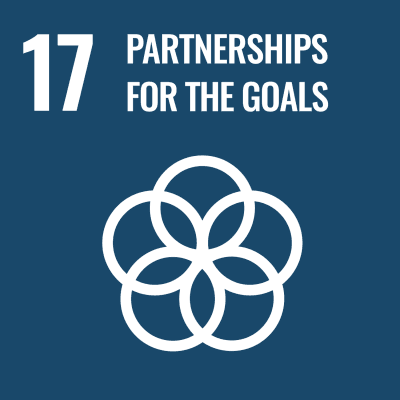-
Faculty of Veterinary Medicine, Department of Veterinary Medicine
- Professor
- Tohru FUKASE
- Research Field
Epidemiology, Parasitology, Animal Pharmaceutical Science
- Keyword(s)
Infectious Disease, Parasite, Drugs for Animals, Preventive Veterinary Medicine, Pharmacoepidemiology
- Research theme
-
- Epidemiological research on infectious diseases of animals
- Treatment and prevention of parasite infections in animals
- Efficacy and side effets of drugs for animals, etc.
Outline of research activities


I am working for epidemiological research on infectious diseases in animals, especially dirofilariasis and ectoparasite infections in dogs and cats, to aim at contribution to prevention. Furthermore, I am working for development of new drugs for animals. And I am also expanding the appropriate use of drugs in animals through pharmacoepidemiological research on usage survey, re-examination of efficacy and incidence of side effects of already-existing drugs.
 Photos are a cat flea and a tick. Cat fleas are mundanely detected on dogs as well as cats, and also on humans in recent years in Japan. Ticks have gotten a lot of attention recently as vectors of severe fever with thrombocytopenia syndrome (SFTS). I am working for development of ectoparasiticides.
Photos are a cat flea and a tick. Cat fleas are mundanely detected on dogs as well as cats, and also on humans in recent years in Japan. Ticks have gotten a lot of attention recently as vectors of severe fever with thrombocytopenia syndrome (SFTS). I am working for development of ectoparasiticides.- Desired cooperation
-
- Epidemiological survey of various diseases of animals
- Research on parasite infections in animals
- Usage survey of drugs in animals, etc.
-
Faculty of Veterinary Medicine, Department of Veterinary Medicine
- Professor
- Toshiyasu MATSUI
- Research Field
Neuroanatomy, Veterinary Anatomy
- Keyword(s)
Nervous System, Olfaction, Neuroanatomical Tracing, Cholinergic Neuron
- Research theme
-
- Neuronal connections of the reticular formation
- Morphology of cholinergic interneurons
- Comparative anatomy of the amphibian olfactory system
Outline of research activities

Mastication and swallowing are patterned movements that are essential for the vital activities of animals including humans. These movements require coordinated activity of orofacial muscles, and interneurons in the brainstem control the activity of motor neurons in the orofacial motor system. Among brainstem interneurons, we are focusing on cholinergic interneurons and studying their cell morphology, neural circuits, and neurotransmission. By elucidating the neural circuits between interneurons and motor neurons, we aim to gain knowledge that will lead to an understanding of orofacial movement disorders.
We are also studying the histology of the olfactory organ and its center, the olfactory bulb, of urodele amphibians. By comparing the olfactory system between urodelan species, we are investigating the relationship between the adaptation to water and land environments and the olfactory evolution.

- Desired cooperation
-
- Histological analysis of animal tissues
- Evaluation and development of medical devices using animal anatomy
-
Faculty of Veterinary Medicine, Department of Veterinary Medicine
- Professor
- Toshiyuki SHIBAHARA
- Research Field
Parasitology, Medical Zoology, Laboratory Animal Science and Technology
- Keyword(s)
Helminthic Zoonoses, Trematoda, Paragonimus, Laboratory Animals
- Research theme
-
- Investigation into actual conditions of parasite infection in some animals.
- Taxonomy, ecology and epidemiology of trematoda, with special refference to Paragonimus.
- Survey on low pathogenic parasite and protozoa in laboratory small animals.
Outline of research activitiesThe trematode, Paragonimus westermani is distributed widely throughout the Asia, and has been well-known as one of the important causative agents of helminthic zoonoses, I have been strongly interested in its taxonomy ,ecology and epidemiology and am conducting research work through a steady fieldwork. Especially in recent years, many peaple’s eyes are forcusing on the wild boar’s meat as a “gibier” in order to promote the development of local area. However, many juvenile worms of P. westermani sometimes harbor in the meat through ingesting the second intermediate host, the fresh water crab. Therefore, special attention must be paid to cook and/or preserve the meat. From the parasitological view point, I would like to play a part in risk management of game meats. Besides, I have been guiding the staffs of the national/private university’s laboratory animal facilities at their requests in the extermination of mouse/rat host-specific pinworms and/or protozoa, of which infections are of frequent occurence and do damage to experiment.

- Desired cooperation
-
- Cooperative research work on the taxonomy, ecology and epidemiology of trematoda.
- Consultancy on risk management of game meat.
- Consultancy on the extermination of rodents such as mouse and/or rat specific pinworms and/or protozoa.
-
Faculty of Veterinary Medicine, Department of Veterinary Medicine
- Professor
- Yasuhiko OKAMURA
- Research Field
Comparative oncology, Small animalsurgery
- Keyword(s)
Reconstructive surgery, Tumor marker, Chemotherapy
- Research theme
-
- Reconstructive surgery for bone tumors
- Study of the availability of a new tumor marker
- Study of the anti-tumor effects of xanthine derivatives
Outline of research activitiesOne out of two Japanese will be suffering malignant tumor in their lifetime, there to not be an exaggeration to say that national disease. Dogs and cats as well as humans suffer from malignant tumor. I am conducting research with the goal of applying it to the treatment of human malignancies as well as animal malignancies by treating and researching naturally occurring malignancies in animals.
- Desired cooperation
-
- Comparative oncology
-
Faculty of Veterinary Medicine, Department of Veterinary Medicine
- Professor
- Yasuhiro KAMBAYASHI
- Research Field
Preventive Medicine, Environmental Health, Oxidative Stress , Epidemiology
- Keyword(s)
Chemicals, Ambient Dust, Allergy, Oxidative Stress, Earthquake, Psychchiatric Effect
- Research theme
-
- Involvement of oxidative stress in exacerbation of bronchial asthma by polycyclic aromatic hydrocarbons
- Psychiatric effects of earthquake on the elderliy
- Relationship between parabens contained in household goods and allergic diseases
Outline of research activities
The health effects of transboundary pollution such as Asian dust and fine particulate matter (PM2.5) have become a public health problem. We have focused on its constituents such as polycyclic aromatic hydrocarbons (PAHs). We are also conducting research on the involvement of oxidative stress in exacerbation of symptoms of bronchial asthma caused by PAH using cultured cells.
The eldery are reported to be more susceptible to the psychiatric effects of earthquake. We are analyzing epidemiological surveys data on the psychiatrioc effects of the Noto Peninsula Earthquake (2007) on the elderly who lived in temporary housing or in areas where damage was severe.
We are investigating the relationship between parabens, which are contained as antibacterial agents in household goods such as shampoos and cosmetics, and allergic diseases. We reported on the association of parabens and allergic disease in population over 40 years of age and in infants. I am participating in a cohort study (lifestyle and health, etc.) that has been ongoing for more than 10 years in Noto, including this study.- Desired cooperation
-
- Research on oxidative stress (especially lipid oxidation) and diseases
- Research on environmental chemicals and allergic diseases
- Epidemiological study
-
Faculty of Veterinary Medicine, Department of Veterinary Medicine
- Professor
- Yasunori SHINOZUKA
- Research Field
Preventive Veterinary Medicine
- Keyword(s)
dairy cattle, mastitis, 16S rRNA
- Research theme
-
- Exploring the possibility of new prevention and treatment of mastitis using milk microbiota
Outline of research activities

Our laboratory has established a technique to examine the composition of the mammary flora by comprehensively analyzing the bacterial DNA (16S rRNA gene) contained in milk. Using this technology, we clarified that the relationship between SCC and mammary flora composition of healty cows (left figure). It has also become clear that there is a possible relationship between the composition of the mammary flora and the amount of the immune substance (lactoferrin) contained in milk (right figure). We are conducting research not only for the development of new treatments for bovine mastitis, but also for the application of new mastitis prevention methods using intramammary innate immunity.

- Desired cooperation
-
- Accumulation of basic knowledge on milk microbiota
-
Faculty of Veterinary Medicine, Department of Veterinary Medicine
- Associate professor
- Akira Goto
- Research Field
Farm Animal Veterinary Medicine
- Keyword(s)
Theriogenology, Preventive veterinary medicine
- Research theme
-
- Evaluation of production problems using production records.
- Improving reproductive performance of cattle
- Bovine clinical case study
Outline of research activities

Prospective veterinary medicine for farm animals should endeavor to augment productivity by incorporating strategies to combat production maladies, all the while actively contributing to the prevention and containment of infectious diseases. Through a focused emphasis on theriogenology and herd health management, our aim is to undertake research endeavors that elucidate the etiology, mechanisms, and pathogenesis of diseases in both individual animals and populations, with the overarching objective of advancing diagnostic and therapeutic methodologies.

- Desired cooperation
-
-
Faculty of Veterinary Medicine, Department of Veterinary Medicine
- Associate professor
- Akira MATSUDA
- Research Field
Veterinary internal medicine, Dermatology
- Keyword(s)
Skin barrier, Cutaneous immunology, Drug resistance
- Research theme
-
- Development of new topical agents for animals
- Skin pH and skin barrier
- Sebocytes in canine atopic dermatitis
- Drug resistance in canine mast cell tumor
Outline of research activities
In recent years, the importance of skincare in veterinary medicine has become widely recognized. However, it is known that the epidermis of dogs is much thinner compared to humans. As a result, it remains uncertain whether applying the same skincare practices as humans is appropriate for dogs. In our research laboratory, we are conducting studies on various factors that regulate skin barrier and skin immunity using Beagle dogs and cultured cells. Our goal is to apply the research findings to the field of veterinary clinical practice.
- Desired cooperation
-
- The development of drugs and supplements targeting animal skin diseases
- Analysis of the skin microbiota in dogs
- Analysis of the skin barrier
- Product development in veterinary medicine
-
Faculty of Veterinary Medicine, Department of Veterinary Medicine
- Associate professor
- Fumiyo SAITO
- Research Field
Toxicology, Molecular biology, Risk analysis
- Keyword(s)
Hepatotoxicity, Gene expression analysis, Omics analysis, Molecular pathways
- Research theme
-
- Mechanism analysis of hepatotoxicity and nephrotoxicity
- Mechanism analysis of inter-organ coordination on energy metabolism
- Biomarker Search in Canine Frailty
Outline of research activities



Despite being primarily developed for industrial purposes and not intended for direct human consumption, many chemical substances still come into contact with the human body and organisms in the environment through various pathways, such as water, air, and other environmental factors. Ensuring a safe and secure society requires a thorough evaluation of the toxicity of pharmaceuticals and chemical substances.
In our laboratory, we conduct research on the toxicity of chemical substances through comprehensive gene expression analysis and obtain omics data to elucidate the molecular-level mechanisms, a field known as toxicogenomics. In addition to utilizing omics technology for understanding the inter-organ coordination of energy metabolism in vivo, our research also focuses on elucidating pathological processes in both humans and dogs.
- Desired cooperation
-
- Data science (machine learning, data mining, etc.)
- Various disease models (genetically engineered animals, clinical samples, etc.)
-
Faculty of Veterinary Medicine, Department of Veterinary Medicine
- Associate professor
- Hidekazu TAKAHASHI
- Research Field
Environental health, Public health
- Keyword(s)
Environmental Microbes, Pollutants, Data analysis
- Research theme
-
- Microorganisms and pollutants in water and soil etc.
- Analysis of disease data, public data, etc.
Outline of research activities




We mainly conduct research related to environmental health. We are working on microorganisms, viruses, contaminants, etc. that exist in water and soil. We also aim to search for useful microorganisms that can contribute to solving environmental problems. We also conduct research using epidemiological and informatic methods.
- Desired cooperation
-
- Instrumental analysis
-
Faculty of Veterinary Medicine, Department of Veterinary Medicine
- Associate professor
- Hirohito OGAWA
- Research Field
Virology, Micorobiology, Zoonosis
- Keyword(s)
Viruses, Bacteria, Infectious Diseases, Epidemiology, One Health
- Research theme
-
- Epidemiological investigations of zoonotic diseases
- Establishment of mammalian cell lines and diagnostic methods for infectious diseases
- Studies on host specificity of viruses
- Studies on endogeneous virus-like elements
Outline of research activities


Changes in the global environments have increased incidence of infectious diseases. Most of these diseases are zoonoses which are transmitted from animals to humans. It is an urgent task to control and prevent of zoonotic disease outbreaks. However, it is not simple and straightforward, since the natural reservoir animals and the transmission routes of the causative agents are not elucidate in all zoonoses. From a glocal perspective, the objective of this project is to forestalling outbreaks of zoonotic infection on the basis of epidemiological investigations in Shikoku.
Host specificity of infectious agents are interested because the mechanism is different for each infectious agent. Adenoviruses are believed to be co-evolved with their specific hosts, and usually infect one particular or several, closely related host species. However, certain bat adenoviruses exhibited a broad range of in vitro cell tropism. We try to elucidate its host-range determinants.- Desired cooperation
-
- Pathology
- Mass spectrometry
- Bioinformatics
-
Faculty of Veterinary Medicine, Department of Veterinary Medicine
- Associate professor
- Kei-ichi KATAYAMA
- Research Field
Laboratory animal science, Neroscience
- Keyword(s)
Neuropsychiatric disorder, Model animal, Neural development
- Research theme
-
- Pathogenesis of neurological and psychiatric disorders
- Mechanism of neural network formation
- Generation of animal models of disease
Outline of research activities

For neruvous system to function properly, each component cell must be produced in adequate numbers, placed in the correct position, and correctly networked with each other. Any failure in any of these processes can impair neurological function and cause neurological and psychiatric disorders. Through the generation and analysis of animal models of neurological and psychiatric disorders, I am working to elucidate the pathogenesis of these diseases and to understand the fundamental mechanisms underlying the development of neural tissue, especially the process of neural network formation.
- Desired cooperation
-
- Pathogenesis of neurological and psychiatric disorders
- Generation and analysis of animal models of disease
-
Faculty of Veterinary Medicine, Department of Veterinary Medicine
- Associate professor
- Keiichi HISAEDA
- Research Field
Livestock Hygiene, Clinical Veterinary Medicine for Production Animals
- Keyword(s)
Mastitis, Milk squeezing hygiene, Livestock feeding management, Infectious diseases
- Research theme
-
- Research on pathogenesis and control of mastitis in dairy cows
- Research on productivity improvement in livestock production
- Research on the Role of Livestock Production in Climate Change and its Contribution to Society
- Research on the improvement of medical treatment techniques in clinical practice for industrial animals. etc.
Outline of research activities

Mastitis is the most devastating economic burden in dairy farms. We have studied the epidemiology of acute mastitis caused by coliforms, the relationship between clinical symptoms and cytokines and acute phase proteins, and the relationship between symptoms and prognosis, and found a link. In addition, in the treatment of mastitis, it was found that the application of a lotion with antibacterial activity (Ceramella) to the inflamed udder, in addition to conventional antibiotic treatment, decreases breast induration and somatic cell count. Studies have shown that the shorter the milk is cultured, the more causative organisms are detected in bacteriological tests of milk. As for prevention of mastitis, administration of a leptospirosis vaccine has been shown to reduce clinical forms of mastitis. It was also found that the severity of symptoms of acute mastitis caused by Escherichia coli was related to the level of ionized calcium in the blood at the time of initial examination. We are studying prevention, treatment, and prognosis of mastitis in dairy cows. It was found that there is a relationship between blood physiological changes in dairy cows in response to climatic changes and stress. Based on the results of this research, we would like to further our research on improving milk productivity.
- Desired cooperation
-
- Research and drug development for prevention and treatment of mastitis
- Research on Biocides and Improvement of Livestock Productivity
- Research on Climate Change and Animal Welfare in Industrial Animals
- Research on infectious disease control in production animals. etc.
-
Faculty of Veterinary Medicine, Department of Veterinary Medicine
- Associate professor
- Koji HAYAKAWA
- Research Field
Epigenetics
- Keyword(s)
Chromatin, DNA and histone chemical modification
- Research theme
-
- Studies on interaction between nutrition and epigenetic regulation
- Studies on the function of histone O-GlcNAc modification
- Studies on cell- and disease-type specific gene regulation
Outline of research activitiesSince the Human Genome Project completed sequencing the 3 billion bps that make up human DNA, it became clear not only that we are able to read nature’s complete genetic blueprint, but also that the information stored in the sequence of the DNA is not enough per se to completely explain development, physiology and disease. The field dedicated to decipher the heritable features that complements the genetic information stored in the DNA sequence is termed “epigenetics”.
Epigenetic regulation provide a possible link between the environment and long term alterations in gene function that might lead to disease phenotypes. Most diseases are related in some way to the loss or gain in gene functions. To reveal the cause and mechanism of chronic disease (e.g. diabetase and hypertention), we mainly focus on the interaction between nutritional condition and epigenetic alteration.- Desired cooperation
-
- Studies on Chronic diesase
- Bioinformatics
- Developmental engineering
-
Faculty of Veterinary Medicine, Department of Veterinary Medicine
- Associate professor
- Kosei NAKAJIMA
- Research Field
Comparative Orthopedic Surgery
- Keyword(s)
Bone reconstructive surgery, Bone microenvironment
- Research theme
-
- Bone reconstructive surgery of extremity and spine
- Analysis of microenvironment
Outline of research activitiesTo provide sophisticated treatments as seen in human medicine to animal patients, I have strived to conduct researches in the medical institutions of orthopedic surgery.
First, clinical orthopedic researches are ongoing. The clinical image is an example of bone reconstructive surgery after removal of malignant bone sarcoma. Thus, human surgical techniques are applicable to animal patients.
Second, in musculoskeletal tumor field, the multidisciplinary treatments including particle radiation and a novel target therapy for hard-to-treat cancers are ongoing in cooperation with National Cancer Center, Ehime University Orthopedic Surgery, Hyogo Ion Beam Medical Center and Karmanos Cancer Institute. The results can contribute to the animal patients of musculoskeletal tumors with no choice of therapy.
Third, translational researches are also ongoing. The analysis of microenvironment have been complicated because millions of molecular interactions are possible. Hence, using bioinformatics technologies, a software has been constructed to visualize these numerous interactions.
- Desired cooperation
-
- Clinical application of a novel orthopedic implants
- Microenvironmental analysis of various biological tissues
-
Faculty of Veterinary Medicine, Department of Veterinary Medicine
- Associate professor
- Michihito TAGAWA
- Research Field
Oncology, Internal Medicine, Clinical Pathology, Immunology
- Keyword(s)
Dog, Cat, Liquid biopsy, Cytology, Anticancer drug exposure
- Research theme
-
- Development of novel tumor diagnostic markers for dogs and cats
- Establishment of liquid biopsy in veterinary medicine
- Anticancer drug exposure risk survey in animal hospitals
Outline of research activities
Due to improvements in breeding methods and advances in veterinary medicine, the average lifespan of pets has increased dramatically. Unlike humans, animals often do not show their illness even when they are sick, and by the time they notice it, it often progresses and is difficult to treat. Advanced diagnostic imaging such as CT and MRI and various “cancer markers” are used in human medicine, but there are no “cancer markers” that can be used in veterinary medicine, and advanced diagnostic imaging requires high cost and general anesthesia. If there is a disease marker that accurately reflects the pathology of “cancer”, it will be possible for owners and patient animals to avoid the burden of anesthesia and examination, and to objectively judge the need for continuous treatment. Therefore, in recent years, we have focused on a technology called liquid biopsy, which has been attracting attention in medicine, to detect genes circulating in the blood, and we are researching its application to pet cancer. Specifically, we are investigating the usefulness of tumor pathological evaluation and diagnostic markers by measuring the amount of genes released from the tumor itself and detecting specific mutations.

- Desired cooperation
-
- Research on genetic analysis and bioinformatics
- Research on artificial intelligence and deep learning for tumor diagnosis
- Research on cancer and palliative care in veterinary medicine
-
Faculty of Veterinary Medicine, Department of Veterinary Medicine
- Associate professor
- Noritaka MAETA
- Research Field
Tumor Pathology, Surgical Oncology, Immunotherapy
- Keyword(s)
CYR61, MMP, Metastasis, T-LAK
- Research theme
-
- Protein to become the prognostic index of the cancer in the animal
- Mimally invasive surgery
- Influence of the immunotherapy on dog
Outline of research activities1. We investgate protein with the possibility to become the prognostic index of the cancer in the animal. We especially focus on CYR61, and investigate the mechanism of the metastasis and relations with CYR61 and tumor invasion, and usability as prognositicindex of CYR61.
2. We will study methods to maintain the quality of life of postoperative animals, by dveloping new surgical methods and assisting the functions with artificail materials.
3. We will research the effect on living organism, in addition to the antitumor effect of immunotherapy.
- Desired cooperation
-
- Research on the tumor marker and mechanism of metastasis
- Research on function recovery and function meintenance after surgery using artificial materials
- Research on immunotherapy
-
Faculty of Veterinary Medicine, Department of Veterinary Medicine
- Associate professor
- Sachiko CHIKAHISA
- Research Field
Sleep Physiology, Behavioral Science
- Keyword(s)
Sleep, Energy Metabolism, Behavior, Stress
- Research theme
-
- Sleep and Energy Metabolism
- Sleep Loss and Behavioral Changes
- Stress and Sleep Homeostasis
Outline of research activities
Japanese people sleep less than most developed countries, and one out of every four to five adults has some kind of sleep problem. Sleep deprivation is known to increase the risk of developing depression, anxiety disorders, obesity, and diabetes. My research aims to elucidate the molecular mechanisms underlying these effects of sleep deprivation on the body and mind. In addition, by studying the effects of physical, chemical, psychological, and social stress on sleep homeostasis using mouse models, I aim to elucidate the molecular mechanisms underlying stress-induced sleep disorders and psychiatric disorders and to contribute to the development of preventive and therapeutic methods.
- Desired cooperation
-
- Researches on energy metabolism
- Researches on biological responses to various stresses
- General research on brain functions
-
Faculty of Veterinary Medicine, Department of Veterinary Medicine
- Associate professor
- Shumpei WATANABE
- Research Field
Virology, Immunology, Evolutionary Biology
- Keyword(s)
Paramyxovirus, Bat, Fusion, Biosafety Level 4, Quasispecies
- Research theme
-
- Study of highly pathogenic zoonotic viral diseases
- Mechanism of paramyxovirus infection in the CNS
- Development of attenuated vaccine using codon optimization technique
Outline of research activities
We aim to reveal the mechanism of pathogenicity on highly pathogenic viral zoonoses, using our Biosafety level 3 (BSL3) laboratory, as well as BSL4 facility in the foreign country (as a coolaborative research with Australian Animal Health laboratory, CSIRO).
So far, through a collaborative research with AAHL, we had established the reverse genetics system for nipah virus or hendra virus. By introducing mutations into the viral genome with the system, we are trying to rescue or make mutant virus and characterize the mutant virus. This approach would find or characterize nature of the original virus. Moreover, we would like to develope effective and safe vaccines for the viruses using recombinant mutant viruses.

- Desired cooperation
-
- Pathological researches
- Development of anti-viral drugs using bioinfomatics and synthetic chemistry
- Epidemiological researches on wild animals
-
Faculty of Veterinary Medicine, Department of Veterinary Medicine
- Associate professor
- Takako SHIMOKAWA
- Research Field
Veterinary Nephrology and Urology, Veterinary Internal Medicine
- Keyword(s)
Hemodialysis, Blood Purification Therapy, Acute Kidney Injury
- Research theme
-
- Blood purification therapy in small animal practice
Outline of research activitiesThere are numerous diseases that are difficult to diagnose and refractory to conventional treatments. I have special interests in acute kidney injury, systemic inflammatory response syndrome, sepsis, and refractory immune-mediated diseases. Currently, I am conducting researches on blood purification therapy to establish the means of treatment of these diseases.
- Desired cooperation
-
- Researches on blood purification therapy








